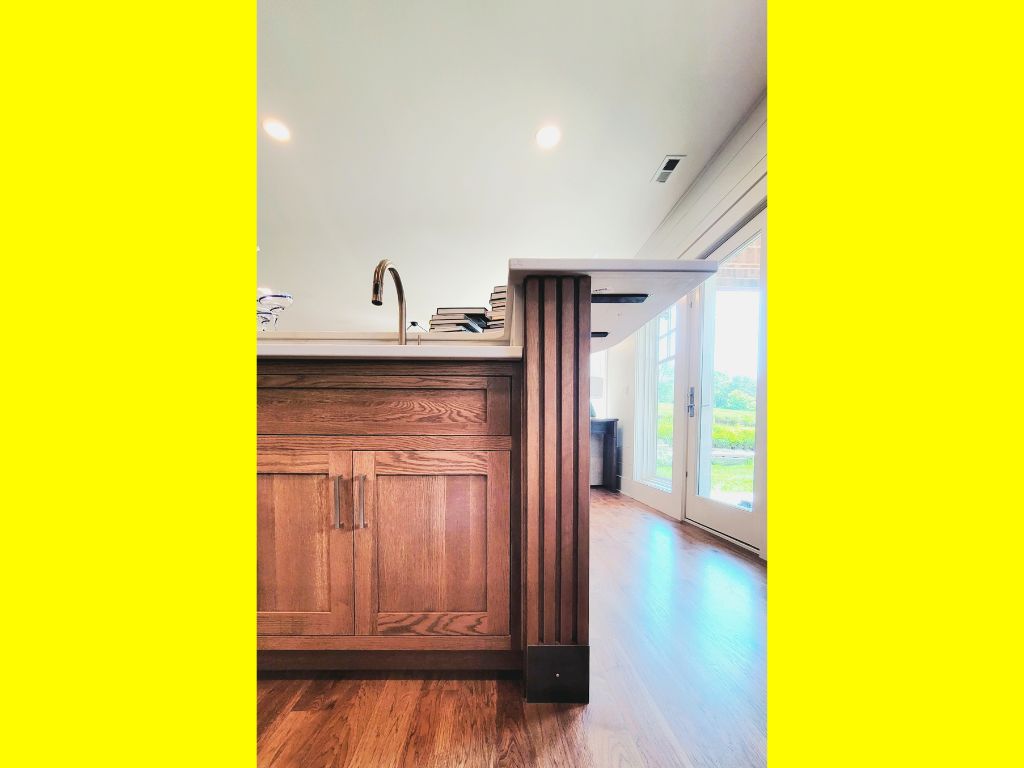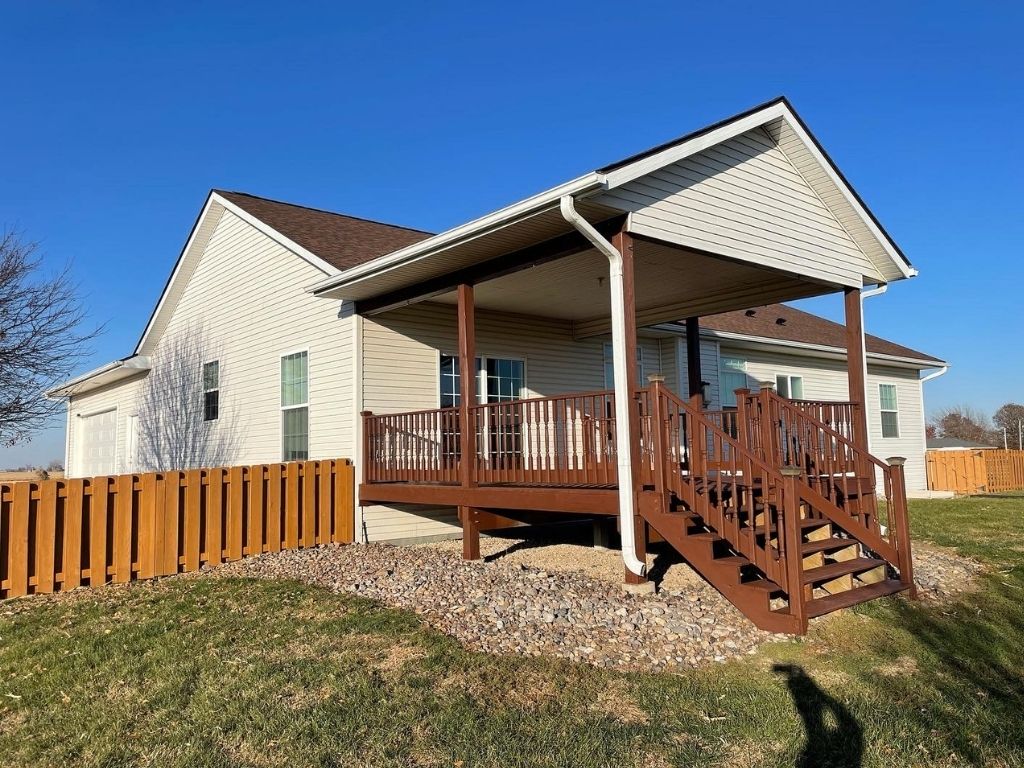Fence Staining And Refinishing
Fence Staining And Refinishing
A good fence does more than frame a yard—it defines your property, boosts curb appeal, and protects kids, pets, and plantings. Iowa’s seasons, however, are tough on wood. Sunlight breaks down lignin (the “glue” in wood fibers), freeze–thaw cycles open checks, and spring/summer storms drive moisture into end grain. Left untreated, even quality cedar or treated pine will gray, splinter, and cup far sooner than it should.
At The Painters Ames Painting Company, we build fence staining and refinishing projects around three outcomes: durability, consistent color, and easy maintenance. Below you’ll find a clear, no-fluff guide to systems, prep, pricing, timelines, and care—so you can choose what fits your fence, your budget, and Ames’ climate.

Understanding Fence Staining and Refinishing
Fence staining and refinishing are processes that involve treating the wooden surface of your fence to protect it from the elements, enhance its durability, and rejuvenate its appearance. These processes go beyond a mere cosmetic makeover; they provide vital protection against moisture, rot, sun damage, and pests that can compromise the integrity of your fence over time.
The Benefits of Fence Staining and Refinishing
Weather Protection: Wooden fences are particularly vulnerable to the elements. Rain, snow, and fluctuating temperatures can cause the wood to expand, contract, and eventually deteriorate. Fence staining and refinishing create a protective barrier that shields the wood from moisture, preventing rot and warping.
UV Ray Defense: Prolonged exposure to the sun’s ultraviolet (UV) rays can lead to discoloration, fading, and surface damage of wooden fences. Stains and finishes contain UV-resistant properties that help maintain the natural color of the wood while preventing sun-induced deterioration.
Enhanced Aesthetics: A well-stained and refinished fence can significantly enhance the visual appeal of your property. The right stain can bring out the natural beauty of the wood, highlighting its grain and texture, while also providing a range of color options to complement your home’s style.
Increased Longevity: Regular maintenance through staining and refinishing can extend the lifespan of your fence by preventing decay and structural issues. This investment in upkeep can save you money in the long run by delaying or even eliminating the need for costly fence replacements.
Insect and Pest Resistance: Certain types of stains and finishes contain additives that deter insects and pests from infesting the wood. This protection is especially valuable in preserving the integrity of your fence, as wood-boring insects can cause significant damage over time.
Value Addition: If you’re considering selling your property in the future, a well-maintained fence can increase its resale value. A freshly stained and refinished fence gives potential buyers a positive first impression and suggests that the property has been cared for meticulously.
Our Fence Staining & Refinishing Process (What to Expect)
At The Painters, we follow a disciplined sequence so your stain lays down evenly and lasts.
1) Assessment & Quote (Free)
Identify wood species (cedar, treated pine) and age.
Check for gray weathering, mildew, cupping, loose fasteners, and soil contact.
Test for water absorption (beading vs. soaking) and previous coatings.
Provide a written scope with product system, color options, prep plan, timeline, and fixed price.
2) Wash, Clean & Brighten
Low-pressure wash to remove dirt, pollen, oxidized “gray,” and loose fibers.
Apply a wood cleaner (and mildew treatment if needed).
Rinse thoroughly, then apply a wood brightener/neutralizer to restore pH and open pores for even stain uptake.
Why brightener matters: Cleaning solutions can raise pH and darken lignin; a brightener neutralizes the surface so stain penetrates evenly and colors read true.
3) Repairs & Prep
Tighten or replace fasteners; re-set proud nails/screws.
Replace failing pickets/rails; trim splintered ends.
Lightly sand fuzzed fibers (common after washing) and any raised grain at hand-touch areas (gates, caps).
For new fences with mill glaze (a slick factory sheen), we degloss the surface so stain can enter the fiber.
4) Dry-Down & Moisture Check
Wood must return to a safe moisture content (typically ≤15%). Rushing stain onto damp wood traps water and shortens lifespan. We plan around weather to get a proper dry window.
5) Mask & Protect
Shield adjacent concrete, house siding, plants, mulch beds, and hardware.
Cover soil line as needed to avoid splash staining.
6) Application (Brush/Roll/Spray + Back-Brush)
Work one panel at a time from top to bottom to prevent lap marks.
Back-brush/back-roll all sprayed sections to push stain into pores and even the film.
Flood coat end grain (tops of pickets, cuts, post caps) and horizontal surfaces where water sits longer.
7) Second Coat / Maintenance Build (If Specified)
Some systems require a second coat for color depth and UV shield. We follow manufacturer recoat windows and verify even uptake before moving on.
8) Cleanup, Gate Re-Hanging & Final Walkthrough
De-mask, tidy site, and re-hang gates with proper swing/clearances.
Walk the fence with you, confirm color uniformity, and discuss maintenance schedule.

How Often Should You Re-Stain?
Intervals vary by exposure, system, and color depth (darker tints often last longer):
Transparent: 12–24 months
Semi-Transparent: 24–36 months
Semi-Solid: 3–4 years
Solid-Color: 4–6 years (with as-needed touch-ups)
Sun-facing sections (south/west) usually need attention first. We often do partial maintenance coats on those runs to extend the life of the whole fence economically.
Signs Your Fence Is Ready
Water soaks in instead of beading.
Color looks dull, chalky, or patchy.
Splinters or feathering fibers after a long dry spell.
Green/black mildew blooms near sprinklers or shaded runs.
Fasteners loosening or boards starting to cup.
Cedar vs. Treated Pine: What’s Different?
Cedar: Naturally rot-resistant; stains beautifully with transparent/semi-transparent systems. Avoid overly heavy films that can peel; think penetration first.
Pressure-treated pine: Often contains more moisture at install; needs a longer dry-down before initial stain. Semi-solid or solid systems help mask uneven green/brown tones and offer stronger UV protection.
Care & Maintenance (Simple Routine, Big Payoff)
Rinse once or twice a year with a garden hose to remove dust/pollen (avoid pressure too close to the wood).
Trim vegetation back 6–8 inches for airflow; keep mulch from touching boards to reduce wicking.
Sprinklers: Re-aim heads so they don’t saturate the fence.
Spot clean mildew with a fence-safe cleaner; call us if you’re unsure which product fits your stain.
Touch-ups: We leave labeled stain for small nicks; for larger areas, call us—color-blend matters.
FAQs: Fence Staining & Refinishing in Ames
How soon can I stain a brand-new fence?
Typically after 3–12 weeks, when moisture content drops and mill glaze is addressed. We test the wood on site and recommend timing.
Do you spray or brush?
Both. We often spray then back-brush/back-roll to ensure penetration and even finish. Pure brushing is used on delicate areas or tight access.
Can you match my deck or shutters?
Yes. We provide sample swatches outdoors so you can see color in real light next to existing finishes.
Will stain harm plants or grass?
We mask and cover beds, pre-wet delicate plantings, and choose products and methods that minimize risk. We tidy the site thoroughly at day’s end.
What about HOA rules?
We can prep submittal materials (color chips, product data) and match HOA-approved palettes.
Do you warranty the work?
We provide a written workmanship warranty on residential projects and outline recommended maintenance intervals so your finish keeps its look.
Why Homeowners Choose The Painters
Local & accountable to Ames and Story County
Licensed & insured crews with safety-first sites
Documented scope (prep, products, coats, schedule)
Weather-aware scheduling built around Iowa conditions
Clean job sites—daily tidy-downs, careful masking, and plant protection
Real maintenance plans—so you know when and how to refresh
If you’re comparing fence staining near me options, choose the team that treats your fence like an exterior wood system—not a weekend chore.
Call: (515) 290-0421 • Visit: 725 E Lincoln Wy, Ames, IA 50010
At The Painters, we prep so stain can penetrate, apply to spec, and plan maintenance that keeps your fence looking sharp season after season.
Trustindex verifies that the original source of the review is Google. We couldn’t be happier with our experience having the exterior of our home painted! The painters were efficient and professional and did an amazing job. Communication with the owner was great as well. Would absolutely recommend!Trustindex verifies that the original source of the review is Google. Professional from start to finish. They did exactly what they promised. I appreciate the excellent customer service.Trustindex verifies that the original source of the review is Google. They did an amazing job on my doors. Would highly recommend!Trustindex verifies that the original source of the review is Google. They did a fantastic job painting my house! Absolutely best company to hire for all of you painting needs.Trustindex verifies that the original source of the review is Google. Best painting company in Iowa!Trustindex verifies that the original source of the review is Google. Reasonable prices and excellent workmanship. I will definitely be using them again when I continue home improvements. They go above and beyond to ensure customer satisfaction.Trustindex verifies that the original source of the review is Google. Recently hired The Painters to complete two rooms of painting. They did a great job and completed it on time and budget. Would hire them again.Trustindex verifies that the original source of the review is Google. I was impressed with Richie and his crew. They painted some rooms for me. Their attention to detail and communication really made the difference. Would definitely recommend!Trustindex verifies that the original source of the review is Google. The Painters did a remarkable job freshening up the exterior of our old house. The application was flawless and the job was finished ahead of schedule. A well-deserved five stars.Verified by TrustindexTrustindex verified badge is the Universal Symbol of Trust. Only the greatest companies can get the verified badge who has a review score above 4.5, based on customer reviews over the past 12 months. Read more
